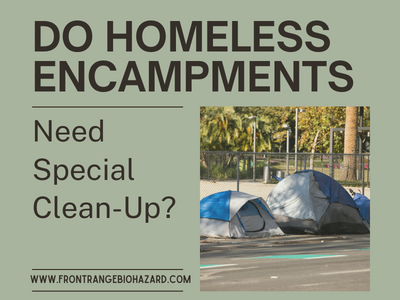 Homelessness is a complex and pervasive issue affecting communities around the world. In many urban areas, homeless individuals and families often set up temporary encampments in public spaces as a means of shelter. While addressing homelessness is a multi-faceted challenge, the question arises: Do homeless encampments need special clean-up?
Homelessness is a complex and pervasive issue affecting communities around the world. In many urban areas, homeless individuals and families often set up temporary encampments in public spaces as a means of shelter. While addressing homelessness is a multi-faceted challenge, the question arises: Do homeless encampments need special clean-up?
The Challenges of Homeless Encampments
Homeless encampments can present a range of challenges for both the individuals living there and the surrounding community. These challenges include:
- Sanitary Concerns: Lack of access to proper sanitation facilities can lead to health hazards and the spread of diseases among encampment residents.
- Environmental Impact: Encampments often generate litter, waste, and debris, which can harm the environment and create eyesores in public spaces.
- Safety Issues: Encampments may pose safety risks, both to those living there and the community at large. Fire hazards, crime, and drug-related issues can become concerns.
- Community Relations: Homeless encampments can strain relations between housed residents and those experiencing homelessness, leading to tension and misunderstandings.
Cleaning Up Homeless Encampments: Special Considerations
Cleaning up homeless encampments is a complex process that requires a thoughtful and compassionate approach. Here are some important considerations:
- Health and Safety: The primary focus of clean-up efforts should be the health and safety of all involved. Homeless individuals living in encampments should be provided access to hygiene facilities, such as portable toilets and handwashing stations, to mitigate health risks.
- Housing Solutions: Merely displacing individuals from encampments without providing viable housing alternatives is not a sustainable solution. Efforts should be made to connect homeless individuals with housing services, shelter options, and social support networks.
- Community Involvement: Collaboration with local community organizations, non-profits, and advocacy groups is essential. Engaging with these stakeholders can help address concerns and develop holistic solutions.
- Environmental Restoration: The clean-up process should include responsible waste disposal, hazardous materials removal, and efforts to restore the environment to its pre-encampment condition.
- Compassionate Approach: City workers or contractors tasked with clean-up should receive training in dealing with homeless individuals in a respectful and compassionate manner. Empathy and understanding can go a long way in facilitating the process.
- Legal and Ethical Compliance: Clean-up efforts must adhere to local laws and regulations, including those governing property rights, sanitation, and public safety.
- Public Health Resources: Local health departments should be involved in the clean-up process to address any potential public health risks associated with encampments.
- Documentation and Transparency: Transparent documentation of clean-up procedures and efforts is crucial to maintain accountability and build trust with both the homeless community and the public.
Homeless encampments are a manifestation of the larger homelessness crisis, and addressing them requires a comprehensive approach that balances the need for public health and safety with the dignity and rights of individuals experiencing homelessness. Special clean-up efforts for homeless encampments should prioritize solutions that address the root causes of homelessness, provide support and resources to those in need, and foster collaboration among community stakeholders. Ultimately, the goal should be to not just clean up encampments but to help individuals transition from homelessness to stable, secure housing.

